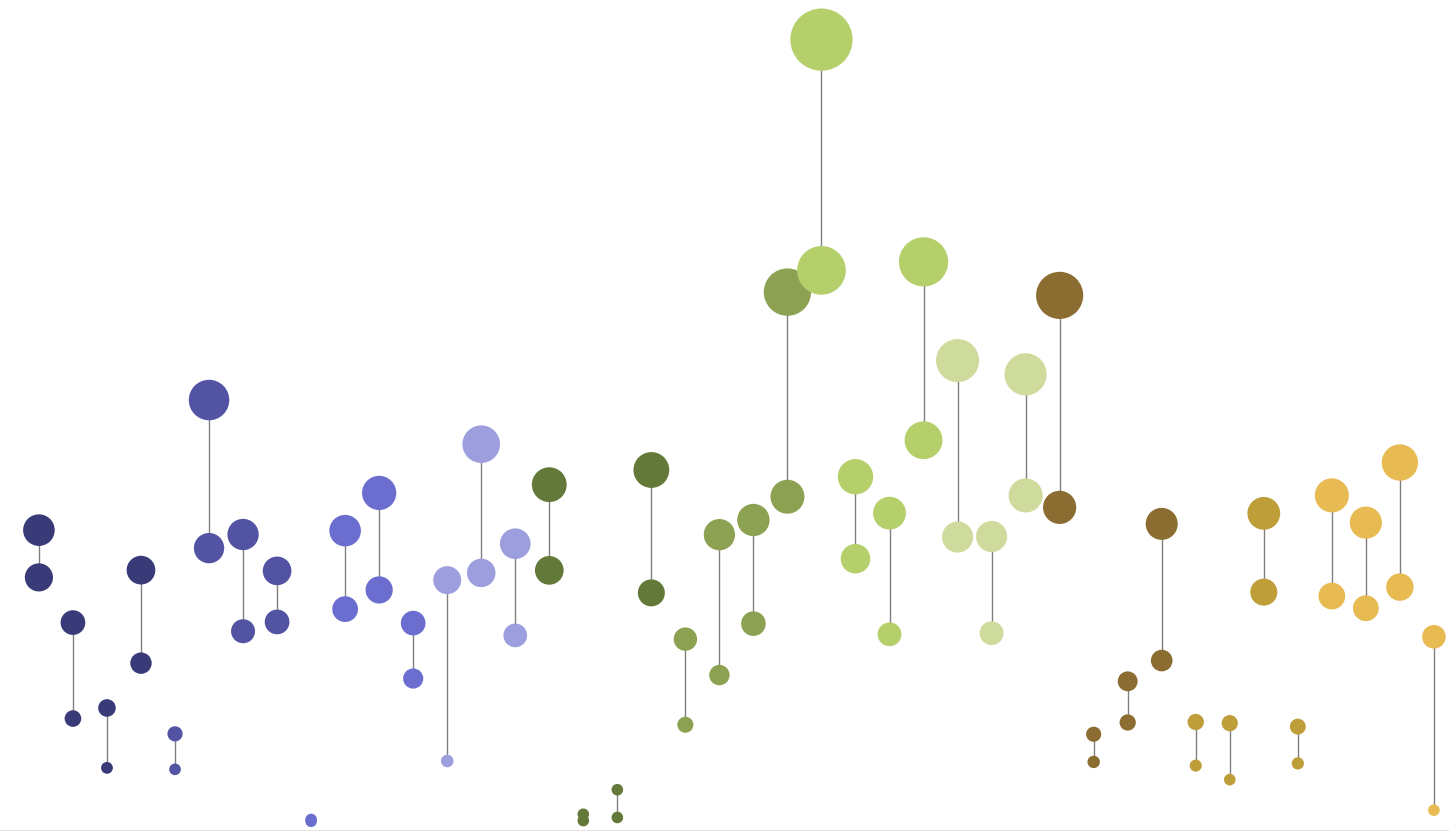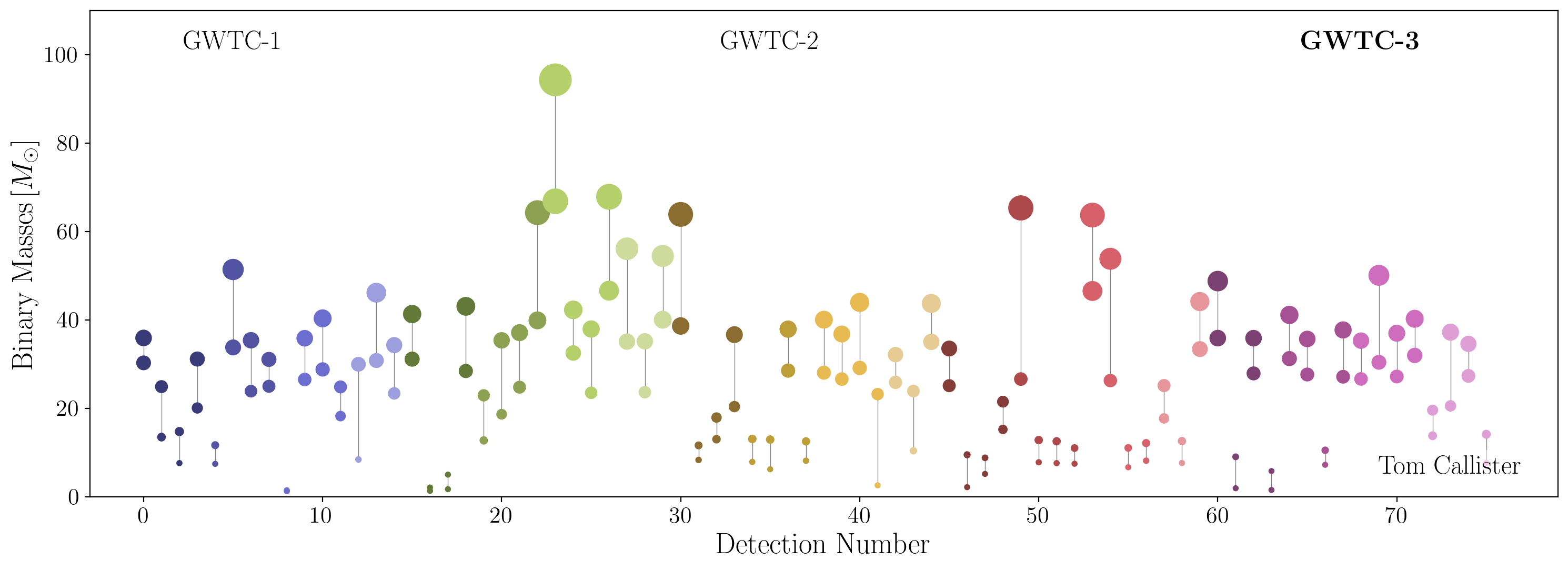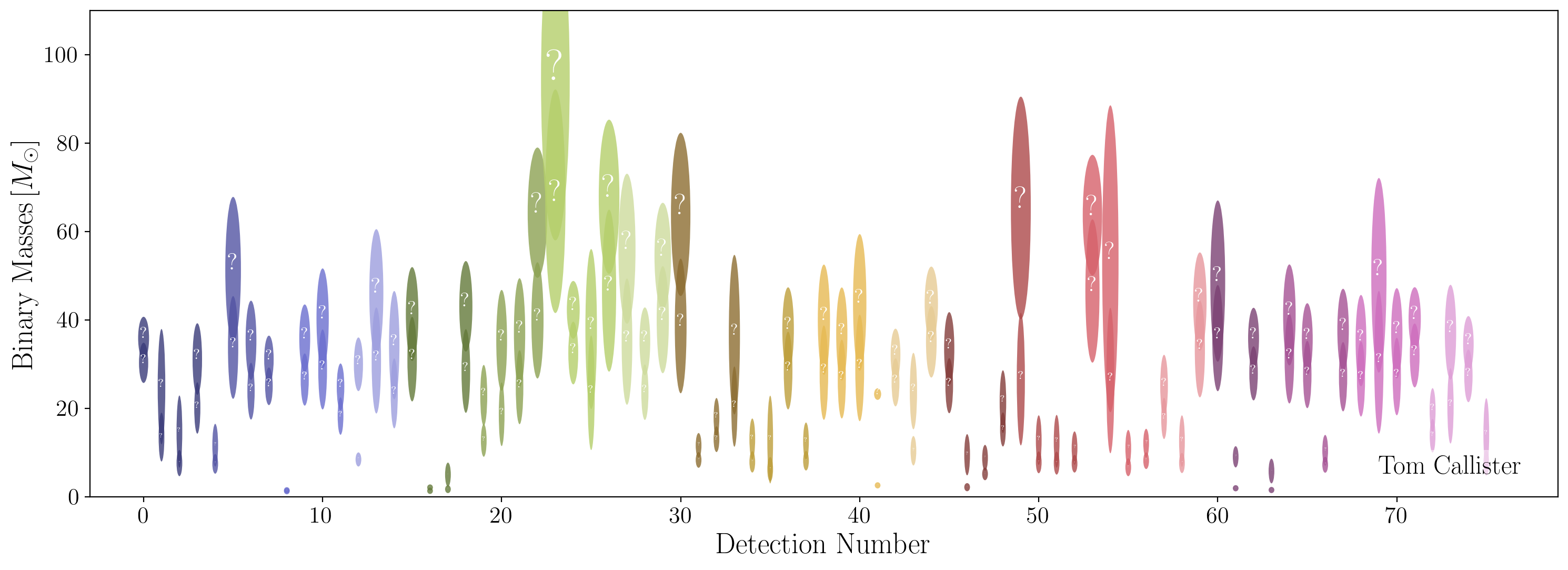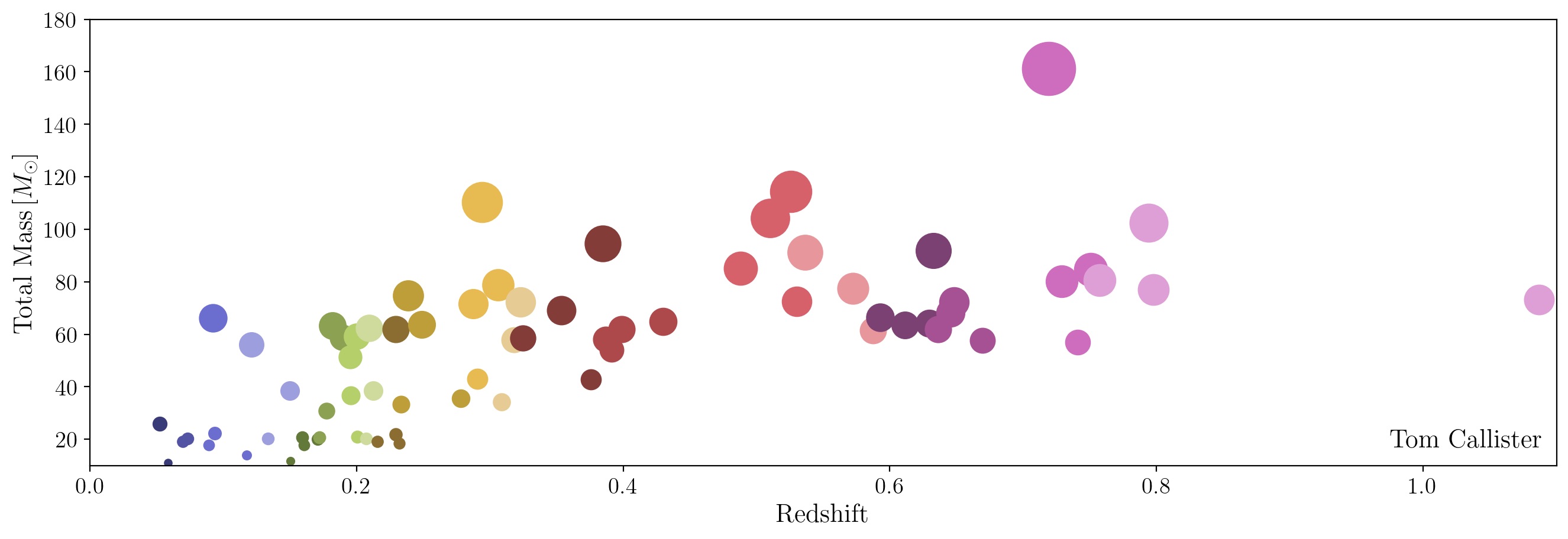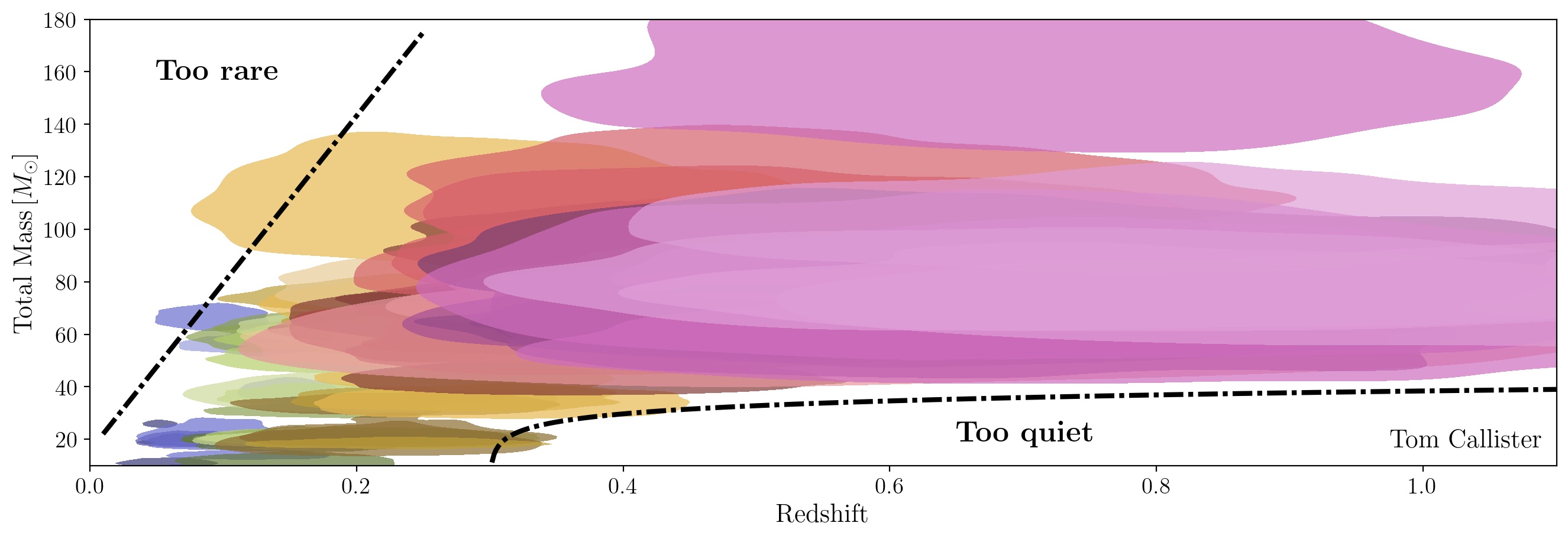I spend a lot of time making plots and graphics for talks, and sometimes I'm asked to share these for others to use. This page links to some recent figures, as well as the code used to generate them. Please use in your own talks and presentations! (If you do so, please credit me! You can even star the linked GitHub repos if you wish.)
Landscape of observed compact binary mergers
The masses of all confident compact binary detections published by the LIGO-Virgo-KAGRA Collaboration to date. The left plot shows point estimates ("best guesses") of each object's mass, while the right plot shows the actual uncertainties associated with each measurement. See more variants at: https://github.com/gw-gallery/cbc-landscape.
Observed binary black hole masses vs. redshifts
The total masses and redshifts of all binary black hole detections published by the LIGO-Virgo-KAGRA Collaboration to date. I like using this pair of plots to illustrate why analysis of the compact binary population is hard. If you look only at point estimates of binary properties (left), it seems as if there is a clear evolution of black hole masses with redshift. Conclusions are much murker if you instead look at full posteriors on binary masses and redshifts (right); this is further compounded by search selection effects (which prevent observations in the bottom right corner) and finite observing time (consistent with no observations in the top left corner). Code and more variants at: https://github.com/gw-gallery/mass-vs-redshift-pollock-plot.
Hierarchical inference demonstration
A quick demonstration of hierarchical inference, showing recovery of the correct underyling population (left) as we gather more and more noisy measurements drawn from this population (right). More at: https://github.com/gw-gallery/hierarchical-inference-demo.
